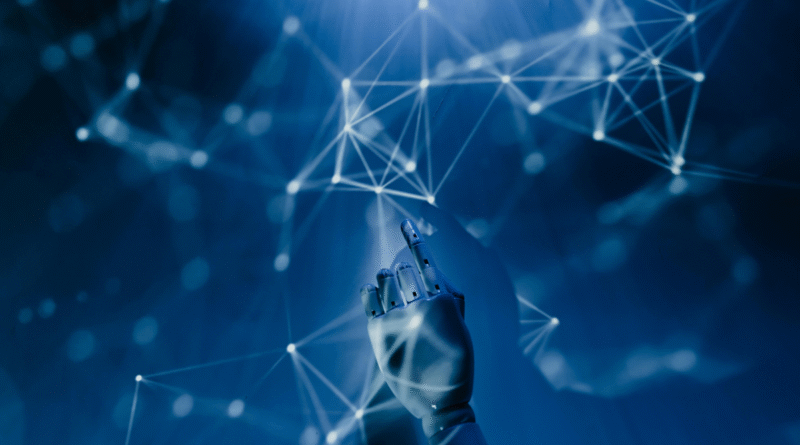Understanding Artificial Intelligence: A Closer Look at its Functionality
Have you ever asked Siri for the weather or let Netflix suggest your next binge-worthy series? Then you’ve already met artificial intelligence or AI, for short. But what is artificial intelligence, and how does it work exactly? Why does it seem to know us better than we know ourselves sometimes?
Don’t worry, this isn’t a lesson full of techy mumbo-jumbo. We’re going to break it down in everyday language, like having a chat over coffee. By the end, you’ll understand AI not just as a sci-fi fantasy, but as a very real part of your daily life.
- 1. What is Artificial Intelligence?
- 2. A Quick History of AI
- 3. Types of Artificial Intelligence
- 4. How Does AI Work?
- 5. AI vs Human Intelligence
- 6. Real-Life Applications of AI
- 7. How AI Learns: Machine Learning Explained
- 8. Deep Learning: The Brain Behind the Brain
- 9. Common AI Tools You May Be Using
- 10. Benefits of AI in Everyday Life
- 11. Risks and Concerns of AI
- 12. Ethics in Artificial Intelligence
- 13. Future of Artificial Intelligence
- 14. How You Can Learn More About AI
- 15. Final Thoughts
- Frequently Asked Questions (FAQs)
1. What is Artificial Intelligence?
Artificial Intelligence, or AI, is a branch of computer science that enables machines to think, learn, and solve problems just like humans. Imagine if your toaster could not only toast bread but also learn which level of crispiness you prefer. That’s AI at work!
AI doesn’t have emotions or consciousness. It simply mimics intelligent behavior based on data and rules. It’s like teaching a dog tricks, only the “dog” is a computer program.
2. A Quick History of AI
AI may feel new, but it’s been around since the 1950s. It all started with the dream of building machines that could “think.” In 1956, a group of scientists coined the term “artificial intelligence” at a conference at Dartmouth College.
Since then, we’ve come a long way from basic math-solving computers to today’s chatbots, self-driving cars, and facial recognition tools.
3. Types of Artificial Intelligence
Not all AI is created equal. There are three main types:
- Narrow AI (Weak AI): Designed for one task, like spam filters or voice assistants.
- General AI (Strong AI): Can understand and perform any intellectual task a human can. We’re not quite there yet.
- Super AI: Smarter than humans in every way. This still belongs to science fiction.
Most AI we use today is Narrow AI; it’s smart but only in specific ways.
4. How Does AI Work?
Let’s get to the heart of it. How does AI work? Think of AI like a recipe:
- Data: The ingredients.
- Algorithms: The cooking instructions.
- Processing Power: The stove.
You feed data into a program, apply algorithms (rules for learning and decision-making), and let the machine “train” itself by recognizing patterns. It’s similar to how kids learn by observing and repeating.
5. AI vs Human Intelligence
Humans and AI solve problems differently. While we rely on experience, emotion, and intuition, AI uses logic, patterns, and probabilities.
For example, you might recognize your friend in a photo instantly. AI breaks it down, analyzing eyes, nose, and even pixel colors to match it with other data.
So while AI can be super fast and consistent, it lacks human creativity and emotional understanding.
6. Real-Life Applications of AI
You might not realize it, but AI is all around you. Here are just a few ways you use it every day:
- Social media feeds (Facebook, TikTok, Instagram)
- Voice assistants (Alexa, Google Assistant)
- GPS & traffic updates
- Online shopping recommendations
- Spam email filtering
- Customer service chatbots
AI is not just about robots; it’s about making tech smarter and life easier.
7. How AI Learns: Machine Learning Explained
Machine Learning (ML) is a major part of AI. It’s how machines get smarter over time.
Imagine teaching a kid what a cat looks like. You show 100 pictures of cats. Over time, the child learns to recognize one. That’s what ML does: it feeds tons of data to a computer so it learns from experience without being explicitly programmed.
There are three types:
- Supervised learning: Like a teacher giving the answers.
- Unsupervised learning: The computer finds patterns on its own.
- Reinforcement learning: Like training a puppy with treats.
8. Deep Learning: The Brain Behind the Brain
Deep Learning is a special kind of machine learning that uses “neural networks,” digital versions of how our brains work.
It’s used in complex tasks like:
- Voice recognition
- Self-driving cars
- Translating languages
If AI is a student, deep learning is the genius of the class. It handles massive amounts of data and improves itself constantly.
9. Common AI Tools You May Be Using
You might be surprised to know how many AI-powered tools you already use:
- Google Search uses AI to guess what you’re typing.
- Spotify recommends songs using AI.
- Netflix suggests shows you’ll likely enjoy.
- Your phone’s camera uses AI for better photos.
You don’t need a robot in your house to be using AI; it’s already in your pocket.
10. Benefits of AI in Everyday Life
Here’s why AI matters to us:
- Saves time by automating tasks.
- Improves accuracy (like in medical diagnoses).
- Personalizes experiences (think playlists, ads, etc.).
- Boosts productivity for businesses and individuals.
Imagine a world without AI, your emails would be full of spam, your GPS wouldn’t warn you about traffic, and your favorite shows would be harder to find.
11. Risks and Concerns of AI
AI isn’t all sunshine and rainbows. There are real concerns, too:
- Job displacement: Will machines replace human workers?
- Privacy issues: AI collects a lot of data, sometimes too much.
- Bias: AI can reflect human prejudices if trained on biased data.
- Security threats: From deepfakes to hacking.
It’s important to develop AI responsibly and keep humans in control.
12. Ethics in Artificial Intelligence
Ethical questions surround AI development:
- Should machines make life-or-death decisions?
- Who’s responsible if an AI makes a mistake?
- Can we ensure fairness in AI predictions?
Companies and governments are working to set rules and boundaries. The goal is to make AI helpful, not harmful.
13. Future of Artificial Intelligence
The future of AI is incredibly exciting and a bit uncertain.
We may see:
- Smarter virtual assistants
- AI in healthcare diagnostics
- Fully autonomous vehicles
- AI-generated art and content
But the key question is: Can we guide AI growth in a way that helps humanity thrive?
14. How You Can Learn More About AI
You don’t have to be a programmer to explore AI. Here’s how you can get started:
- Watch documentaries (e.g., The Social Dilemma, Coded Bias)
- Take free courses (Coursera, edX, YouTube)
- Follow tech blogs like Wired or MIT Tech Review
- Try AI tools like ChatGPT, DALL·E, or Google Bard
Learning AI today is like learning to use the internet in the 90s; early adopters will benefit the most.
15. Final Thoughts
So, what is artificial intelligence, and how does it work?
AI is a tool a powerful, evolving tool that mimics human thought to make our lives easier, faster, and more personalized. While it’s not magic, it often feels like it. Like a helpful assistant, AI is here to serve, but only if we use it wisely and responsibly.
Whether you’re a tech geek or a curious onlooker, understanding AI gives you a front-row seat to the future. And that future? It’s already here.
Frequently Asked Questions (FAQs)
1. What is artificial intelligence in simple words?
Artificial intelligence is when machines are designed to think, learn, and solve problems like humans.
2. How does artificial intelligence learn new things?
AI learns by processing large amounts of data and identifying patterns using algorithms. This is often called machine learning.
3. Is artificial intelligence dangerous?
AI can be dangerous if misused or developed without ethical guidelines. However, when used responsibly, it’s a helpful tool.
4. Can AI replace human jobs completely?
AI may replace some repetitive jobs, but it also creates new roles. It’s more about shifting job types than total replacement.
5. What are some examples of artificial intelligence?
Examples include voice assistants (Alexa), recommendation systems (Netflix), face recognition, and self-driving cars.




